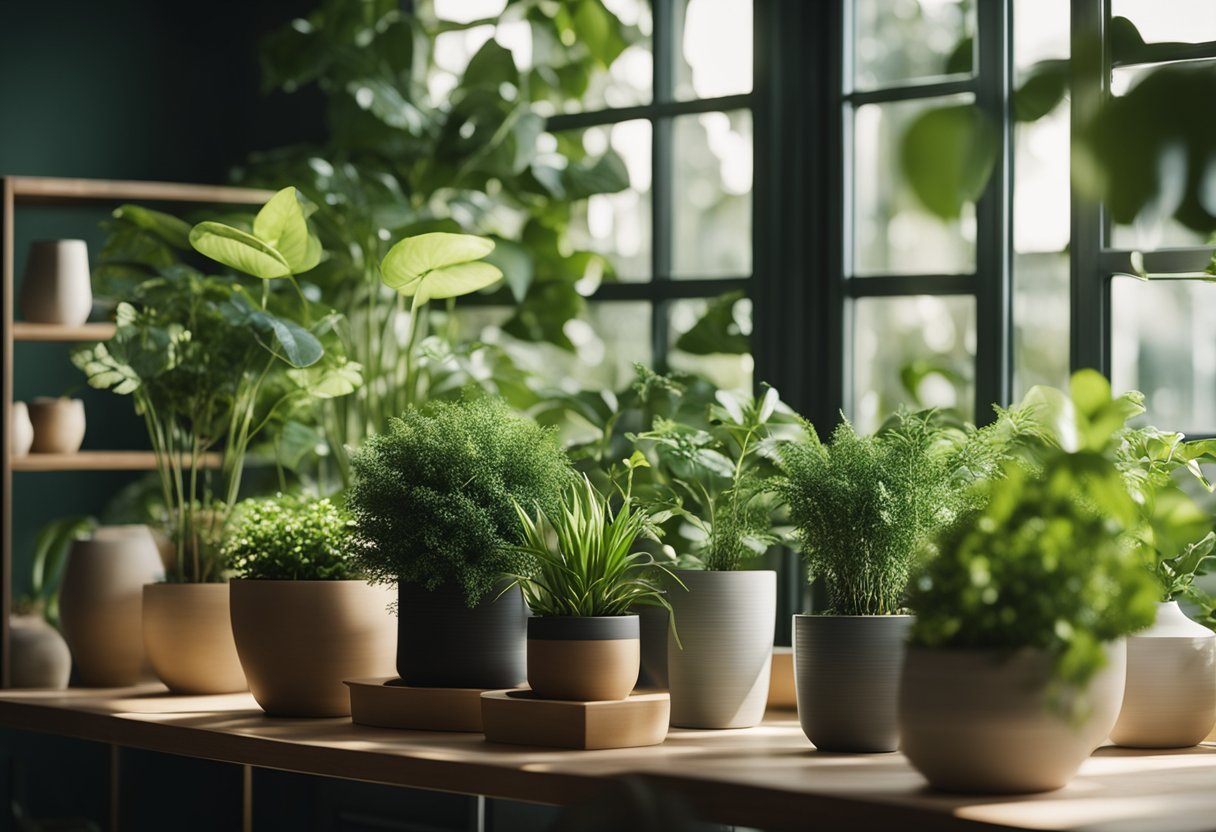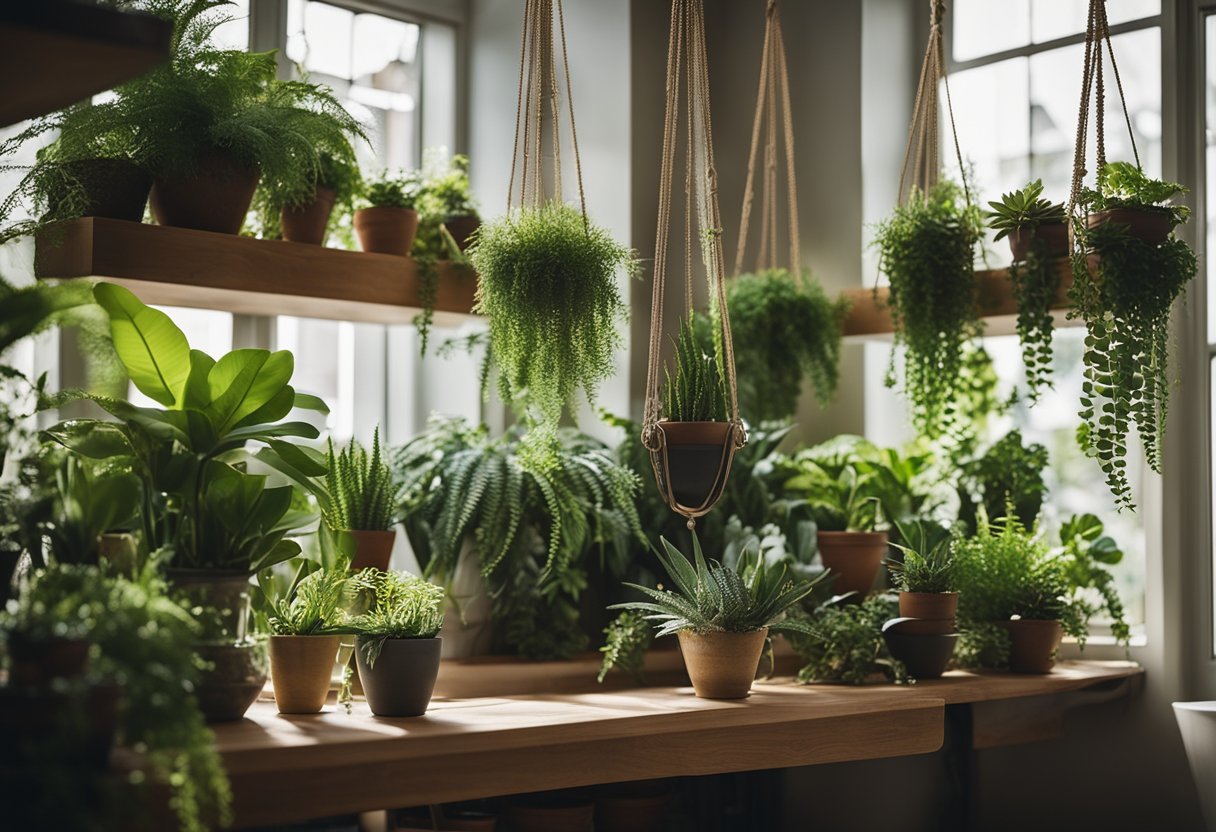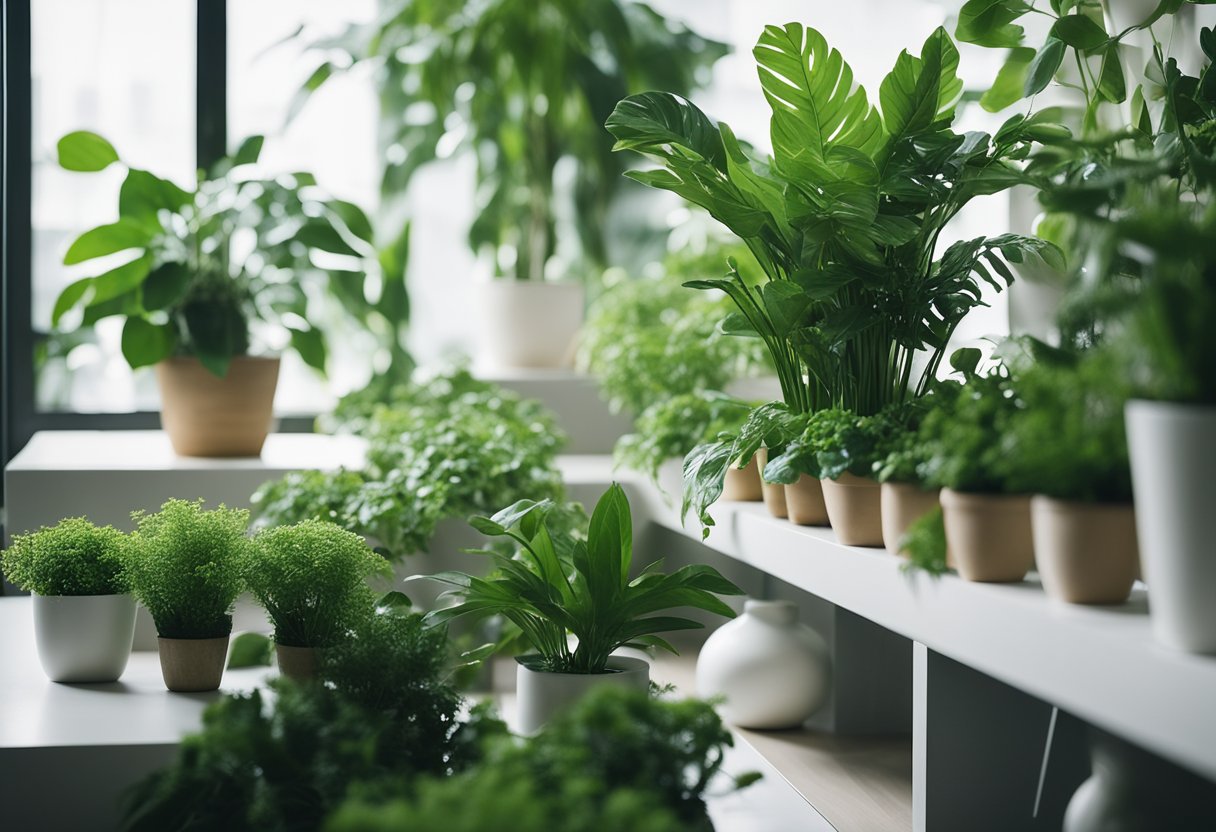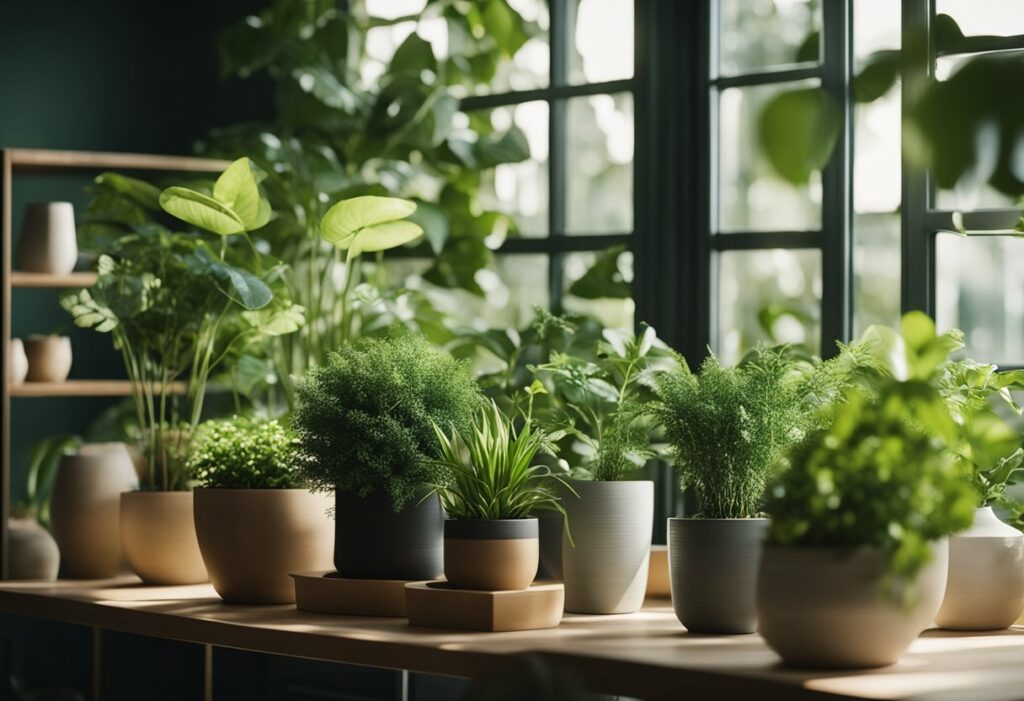Interior Design for Plants: Elevating Your Home Decor with Indoor Greenery
If you’re looking to spruce up your home decor, why not turn to nature? Indoor plants are a great way to add some colour and life to your living space, and they offer numerous benefits beyond just aesthetics. Not only do plants purify the air, but they can also help reduce stress and boost productivity.

In this article, we’ll explore the fundamentals of plant-inspired interior design, including styling techniques and care for indoor plants. Whether you’re a seasoned plant parent or just starting out, we’ll provide you with all the information you need to create a beautiful and healthy indoor garden. So, let’s get started!
Key Takeaways
- Indoor plants offer numerous benefits beyond just aesthetics, including air purification, stress reduction, and increased productivity.
- Plant-inspired interior design is all about finding the right balance between style and function, and incorporating plants into your existing decor.
- To create a beautiful and healthy indoor garden, it’s important to choose the right plants for your space, provide them with proper care and maintenance, and experiment with different styling techniques.
Fundamentals of Plant-Inspired Interior Design

If you are looking to add some greenery to your living space, you might want to consider incorporating plants into your interior design. Plants can add a touch of nature to your home, creating a calming and relaxing environment. Here are some fundamentals of plant-inspired interior design that you should keep in mind.
Understanding Light and Space
When it comes to plant-inspired interior design, it is essential to understand the role of light and space. Different plants require different levels of light, and you should choose plants that are suitable for the amount of light in your space. Consider the direction your windows face and the amount of natural light that enters your room. If your room is not well-lit, you might want to consider plants that can thrive in low-light conditions, such as Snake Plants or ZZ Plants.
In addition to light, you should also consider the available space in your room. Some plants can grow quite large, while others are better suited to smaller spaces. Consider the size of your furniture and the layout of your room when choosing plants. You might want to use tall plants to add height to a room or small plants to create a sense of intimacy.
Choosing the Right Plants for Your Space
When selecting plants for your living space, you should consider the overall style and feel of your room. If you have a minimalist interior design, you might want to choose plants with simple, clean lines, such as the Fiddle Leaf Fig or the Rubber Plant. If your room has a bohemian vibe, you might want to consider plants with more texture, such as the Prayer Plant or the Bird’s Nest Fern.
It is also important to consider the needs of the plants you choose. Some plants require more care than others, and you should choose plants that fit your lifestyle. If you are new to plant care, you might want to start with easy-to-care-for plants, such as Succulents or Spider Plants.
The Art of Potting and Planters
Once you have selected your plants, you should consider the art of potting and planters. The right pot and planter can add texture, contrast, and height to your living space. Choose pots and planters that complement the style of your room. If you have a modern interior design, you might want to choose pots with clean lines and simple shapes. If your room has a more eclectic feel, you might want to consider using vintage or handmade pots.
When it comes to potting, you should also consider the size and height of your plants. Some plants require deeper containers, while others can thrive in shallow dishes. You might also want to consider using plant stands to add height and dimension to your living space.
By understanding the fundamentals of plant-inspired interior design, you can create a beautiful and relaxing living space that incorporates the beauty of nature.
Styling Techniques and Care for Indoor Plants

Indoor plants are a great way to add natural beauty to your home decor. They come in a variety of colours, sizes, and shapes, and can be used to create focal points in your living space. In this section, we will discuss some styling techniques and plant care essentials to help you decorate your home with indoor plants.
Creating Focal Points with Plants
Plants can be used to create focal points in your living space. You can use large plants like palm trees or monstera to draw attention to a particular area of the room. Alternatively, you can group small plants together to create a mini indoor garden. Hanging plants like rhipsalis or trailing plants like devil’s ivy can be used to add height and dimension to a room.
Health Benefits and Wellbeing
Indoor plants not only add aesthetic appeal to your home, but they also have health benefits. Plants like peace lily, snake plant, and asparagus fern are known for their air purifying properties. They can remove pollutants from the air and improve air quality in your home. Studies have also shown that indoor plants can reduce stress levels and improve overall wellbeing.
Maintenance and Plant Care Essentials
When it comes to plant care, it’s important to consider the care requirements of each plant. Some plants like snake plant and african violets require minimal care, while others like tradescantia and devil’s ivy need more attention. Light requirements, temperature, and watering frequency are all important factors to consider when caring for indoor plants.
To help you keep track of your plant care routine, you can create a plant care schedule or use a plant care app. You can also use decorative objects like kokedama or wall planters to display your plants and make them easier to care for. Artificial plants are also a great option if you don’t have the time or resources to care for live plants.
In summary, indoor plants are a great way to add style and nature to your home decor. By following plant care essentials and incorporating plants strategically, you can create a harmonious and inviting living space. So, go ahead and experiment with different plant species and styling techniques to find what works best for you!
Frequently Asked Questions

How can I incorporate plants to enhance my modern living space?
Plants can add a refreshing touch to any modern living space. You can incorporate plants by placing them on shelves, hanging them from the ceiling, or placing them in a corner. You can also use plants as accent pieces or to soften areas. Adding plants to your living space can create a nature-infused oasis that will make your home feel more inviting and relaxing.
What are the best plants to use for small space interior design?
If you have a small space, you can still incorporate plants into your interior design. Some of the best plants to use for small spaces include succulents, air plants, and spider plants. These plants are small and easy to care for, making them perfect for small spaces.
Could you suggest creative ways to display plants in my living room?
There are many creative ways to display plants in your living room. You can place them in hanging planters, terrariums, or on a plant stand. You can also use plants as a centerpiece on your coffee table or as a decorative element on your bookshelf. Another creative way to display plants is to use them as a natural room divider.
What are some unique bedroom plant decor ideas?
Plants can add a calming and relaxing vibe to your bedroom. You can place plants on your bedside table, hang them from the ceiling, or place them on a plant stand. Some unique bedroom plant decor ideas include using plants as a headboard, placing them on a windowsill, or creating a plant wall.
How do plants contribute to the ambience and design of a room?
Plants can contribute to the ambience and design of a room in many ways. They can add colour, texture, and life to a space. Plants can also help to purify the air and create a more natural and relaxing environment. By incorporating plants into your interior design, you can create a space that is both beautiful and healthy.
In what ways can I use plants to complement my interior design style?
You can use plants to complement your interior design style in many ways. For example, if you have a minimalist style, you can use plants as a focal point in your space. If you have a bohemian style, you can use plants to create a natural and organic feel. If you have a modern style, you can use plants to add a touch of nature to your space. No matter what your interior design style is, there is a plant that can complement it.



